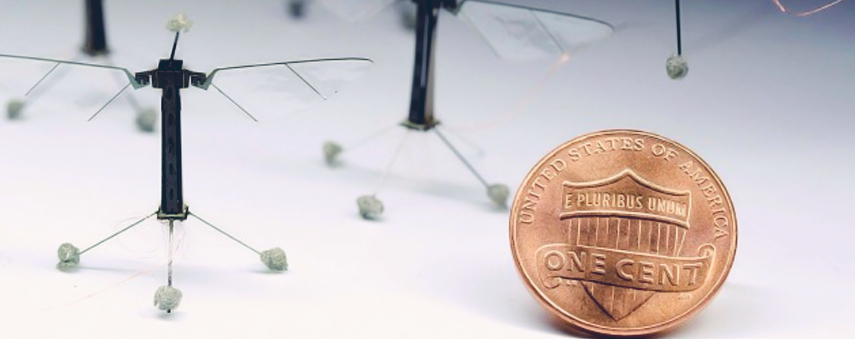Harvard designs ‘RoboBee’ that can dive into water

At 2cm tall and 175mg in weight – that’s a fifteenth the weight of 1p coin – Robobees are now 1,000 times lighter than any previous aerial-to-aquatic robot.
Harvard scientists have been working on robotic bees for years, first unveiling them in 2013. These tiny robots have evolved from simply flying to now sticking to walls and even diving in and out of water. So why do these Robobees matter?
Robobees are years in the making
The Robobee was first developed by mechanical engineering student Robert Wood in 1991.
Since then engineers at the Harvard School of Engineering and Applied Sciences and the Wyss Institute for Biologically-Inspired Engineering have been working on the project. The Robobee’s movements are based on larger amphibious drones capable of the same manoeuvres; the device can
stick to walls, fly, dive into the water, swim and propel out of the water.
The technology is being designed with the aim to eventually be used in search missions. Deploying Robobees to explore a situation before sending in bigger machines to rescue people could save lives: essentially their small size enables them to scope out a situation before going in with the bigger rescue missions.
Other potential uses are surveillance, high-res weather and environment monitoring and crop pollination. The ability to go in and out of water is then is a great accomplishment, as it can help in underwater searches. For a robot so tiny to be able to break through the surface tension of water is a huge achievement.
What’s the technology behind a Robobee?
The bee is kitted with what could be called a miniature combustible jet. It uses buoyancy chambers – or floaties – to swim to the surface, and a plate inside the chambers converting the water into oxyhydrogen.
For a robot so tiny to be able to break through the surface tension of water is a huge achievement.
Once the wings are above water the oxyhydrogen is combustible, and once ignited rocket the RoboBee into the air. The force of breaking surface tension has been described by Robert Wood, Charles River Professor of Engineering and Applied Sciences, as feeling “like an impenetrable wall” and the robot swimming as feeling “like it is surrounded by molasses”.
The surface tension is more than ten times the weight of the RoboBee, and three times its maximum lift. After creating a robot bee that swims in 2016, completing the challenge to find a way for the bee to then break its way back out of the water is a huge step towards a RoboBee that is controlled remotely for its potential uses.
Harvard is also working on patenting the RoboBees commercial opportunities – one day you may even be able to acquire your own little robot bee.
